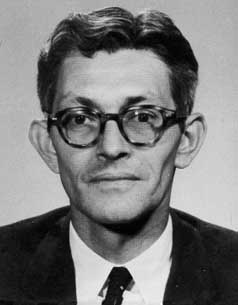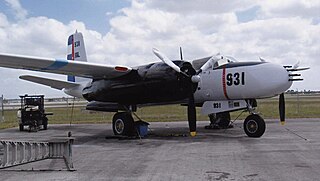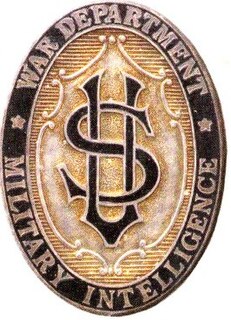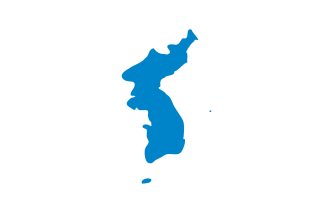A covert operation is a military operation that's intended to conceal the identity of or allow plausible denial by the sponsor. It is intended to create a political effect which can have implications in the military, intelligence or law enforcement arenas affecting either the internal population of a country or individuals outside it. Covert operations aim to secretly fulfill their mission objectives without anyone knowing who sponsored or carried out the operation, or in some cases, without anyone knowing that the operation has even occurred.

James Jesus Angleton was chief of CIA Counterintelligence from 1954 to 1975. His official position within the organization was Associate Deputy Director of Operations for Counterintelligence (ADDOCI). Angleton was significantly involved in the US response to the purported KGB defectors Anatoliy Golitsyn and Yuri Nosenko. Angleton later became convinced the CIA harbored a high-ranking mole, and engaged in an intensive search. Whether this was a highly destructive witch hunt or appropriate caution vindicated by later moles remains a subject of intense historical debate.

A black operation is a covert operation or clandestine operation by a government agency, a military unit or a paramilitary organization. This can include activities by private companies or groups. Key features of a black operation are that it is secret and it is not attributable to the organization carrying it out. The main difference between a black operation and one that is merely secret is that a black operation involves a significant degree of deception, to conceal who is behind it or to make it appear that some other entity is responsible.

A false flag is a covert operation designed to deceive; the deception creates the appearance of a particular party, group, or nation being responsible for some activity, disguising the actual source of responsibility.
The Office of Policy Coordination (OPC) was the covert operation wing of the United States Central Intelligence Agency (CIA). Created as a department of the CIA in 1948, it actually operated independently until October 1950. OPC existed until 1 August 1952, when it was merged with the Office of Special Operations (OSO) to form the Directorate of Plans (DDP).
The Directorate of Operations (DO), less formally called the Clandestine Service, is one of the smallest components of the US Central Intelligence Agency. It was known as the Directorate of Plans from 1951 to 1973; as the Directorate of Operations from 1973 to 2005; and as the National Clandestine Service (NCS) from 2005 to 2015.

Krunoslav Stjepan Draganović was a Croatian Roman Catholic priest associated with the ratlines which aided the escape of Ustaše war criminals from Europe after World War II while he was living and working at the College of St. Jerome in Rome. He was himself an Ustaša and a functionary in the fascist puppet state called the Independent State of Croatia.
The U.S. Army and CIA interrogation manuals are seven controversial military training manuals which were declassified by the Pentagon in 1996. In 1997, two additional CIA manuals were declassified in response to a Freedom of Information Act (FOIA) request filed by The Baltimore Sun. The manuals in question have been referred to by various media sources as the "torture manuals".
Covert Warfare: Intelligence, Counterintelligence and Military Deception During the World War II Era is an eighteen volume book edited by John Mendelsohn and published in 1989 by Garland. The series contains sanitized versions of selected previously classified documents from the National Archives record groups.

The United States Army Counter Intelligence Corps was a World War II and early Cold War intelligence agency within the United States Army consisting of highly trained Special Agents. Its role was taken over by the U.S. Army Intelligence Corps in 1961 and, in 1967, by the U.S. Army Intelligence Agency. Its functions are now performed by its modern-day descendant organization; United States Army Counterintelligence. The National Counter Intelligence Corps Association (NCICA), a veterans' association, was established in the years immediately following World War II by Military Intelligence agents who had served in every area of military and domestic operations. The organization meets annually. Its newsletter, the Golden Sphinx, is published quarterly.

The Military Intelligence Corps is the intelligence branch of the United States Army. The primary mission of military intelligence in the United States Army is to provide timely, relevant, accurate, and synchronized intelligence and electronic warfare support to tactical, operational and strategic-level commanders. The Army's intelligence components produce intelligence both for Army use and for sharing across the national intelligence community.
The Ritchie Boys were the US special military intelligence officers and enlisted men of World War II who were trained at Camp Ritchie, Maryland. Many of them were German-speaking immigrants to the United States, often Jews who fled Nazi persecution. They were primarily utilized for interrogation of prisoners on the front lines and counter-intelligence in Europe because of their knowledge of the German language and culture.
National governments deal in both intelligence and military special operations functions that either should be completely secret, or simply cannot be linked to the sponsor. It is a continuing and unsolved question for governments whether clandestine intelligence collection and covert action should be under the same agency. The arguments for doing so include having centralized functions for monitoring covert action and clandestine HUMINT and making sure they do not conflict, as well as avoiding duplication in common services such as cover identity support, counterespionage, and secret communications. The arguments against doing so suggest that the management of the two activities takes a quite different mindset and skills, in part because clandestine collection almost always is on a slower timeline than covert action.
While the United States was involved in the prosecution of war criminals, US military and intelligence agencies protected some war criminals in the interest of obtaining technical or intelligence information from them, or taking part in ongoing intelligence. The relationships with German war criminals started immediately after the end of the Second World War, but some of the Japanese relationships were slower to develop.

The CIA publishes organizational charts of its agency. Here are a few examples.
The Kampfgruppe gegen Unmenschlichkeit (KgU) was a German anti-communist resistance group based in West Berlin. It was founded in 1948 by Rainer Hildebrandt, Günther Birkenfeld and Ernst Benda and existed until 1959. Rainer Hildebrandt would a few years later establish the legendary Checkpoint Charlie Museum.
Ann M. McDonough (1915-1995), is a member of the Military Intelligence Hall of Fame and a distinguished member of the corps since her induction in 1988. A staunch supporter and goodwill ambassador for the Military Intelligence Corps, her contribution to the corps began with her military service in 1949.

The Corps of Intelligence Police (CIP) was founded by Ralph Van Deman in 1917 as an intelligence agency within the United States Army, and the War Department. In World War I, many of the intelligence disciplines still in use today were deployed for the first time: aerial photography, signals intercept, interrogation teams, and counterintelligence agents.
The Bund Deutscher Jugend was a politically active German association with right-wing and anti-communist leanings founded in 1950. In the beginning of 1953 the BDJ and its paramilitary arm, the Technischer Dienst, were forbidden as extreme right-wing organisations because of "involvement in a secret organisation".
G-2 refers to the military intelligence staff of a unit in the United States Army. It is contrasted with G–1 (personnel), G–3 (operations), G–4 (logistics) and G-5. These "G" sections have counterparts in other branches of the service, with the U.S. Navy using an N– designation, the U.S. Air Force using the A- designation, and the Joint Staff using the J- designation.










